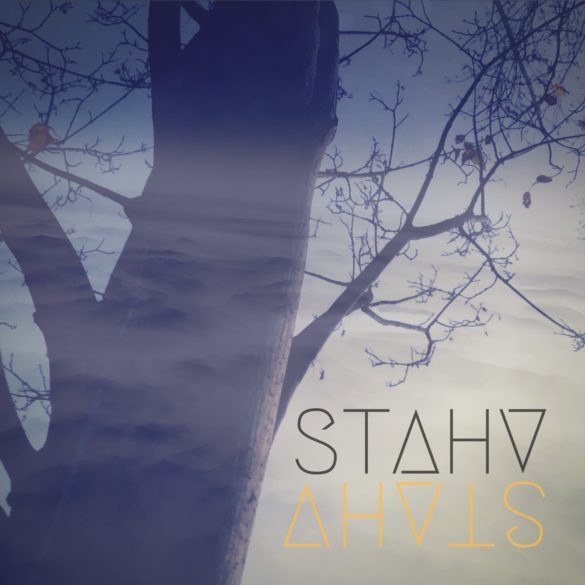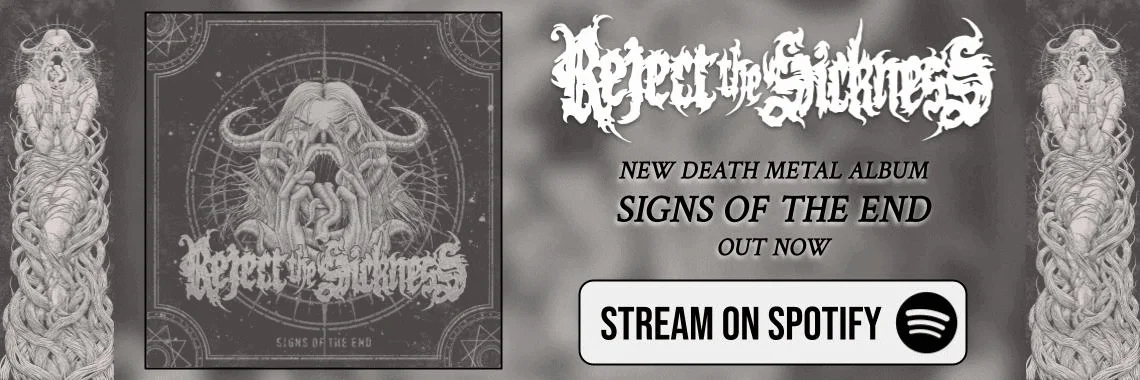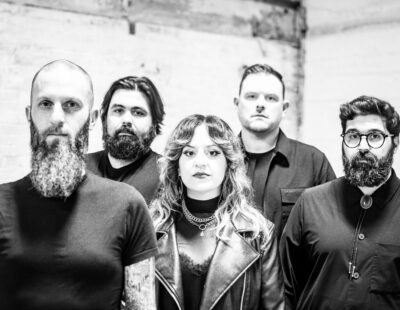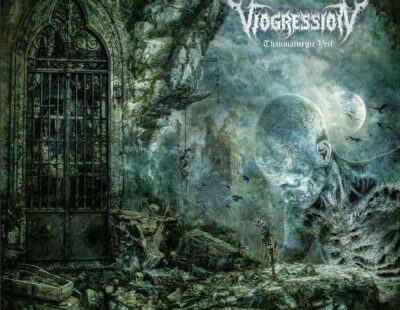
Solomon Arye Rosenschein’s first outing as STAHV succeeds where most of its ilk fail. Unlike most instrumental one-member doom bands, his first self-titled album hold my interest from beginning to end.
That STAHV works comes as no surprise; Rosenschein has cut his teeth as a member of doom duo Teacher and folk-pop outfit The Royal Oui. That said, out of all of his projects I like STAHV best. That’s why I’m streaming the whole damn thing in full below. It can be purchased on vinyl here and cassette here.
In conjunction with the release, Rosenschein spoke with me about how exactly one makes engaging material out of what usually amounts to background music. As it turns out, the recipe involves a whole lot of editing, a little meditation, and rejecting the advice of Eugene Robinson from Oxbow.

You’ve written about metal music before, and also play in some other musical outlets – The Royal Oui and Teacher. It’s a bit of a rudimentary question but how did you decide to begin STAHV?
STAHV started in late 2014 when I began working on a number of these songs. I’d been listening to OM, the Scott Walker/SUNN collaboration, Shabazz Palaces, and a ton of other weird stuff. I was getting pretty deep into the recordings when my old friend Jon [Ethan Mercer, drums] and I started playing together as Teacher which was a blast. The STAHV material was a lot bleaker than what we were writing as Teacher, which was metal, but more song-based and structured.
Something happened this autumn when the rains returned. After taking a break following the Teacher and most recent Royal Oui records, I set up my studio and pulled out those STAHV recording. I ended up creating two new tunes from scratch: “Jardín Infinito” and “Preta Realm” and dug into the old ones with a vengeance. I think I added more than was even there from my original sessions but there was a spirit to those bones from 2014 that felt worth revisiting and refining.
The Royal Oui started putting records out in 2013 and exists concurrent with everything I do. It’s the music my wife Adrienne Pierce and I create together and it takes on the form of whatever interests us at the time. We both made solo records for a long time before that and collaborate together all the time.
Anyone who knows me recognizes my passion for metal. I care deeply about metal and love uncovering and learning more about subgenres and the subtle distinctions between them. The writing I do about extreme music has very much influenced STAHV. Profiling uncompromising acts like Wrekmeister Harmonies and Worship was hugely influential. I love that in the world of extreme music I get to be as much of a fan as an artist. I do a podcast called VANITAS where I pull together favorites from the records I discover. I’m in an MFA program and writing all the time so I can’t cover all the metal I love, so I thought I’d start making mixes like I used to in high school!
In that same line of thinking, where does STAHV fit into the rest of your musical output?
STAHV is where my head is at in terms of music on the extreme end of the spectrum. I want to continue to deepen and expand the project. Along with the Royal Oui, I feel like I have two repositories for my musical output. With STAHV the work is very internal and meditative. In fact, my good friend Seiho, a buddhist monk, encouraged me to begin using my recording process as a type of meditation and that was one of the things that spearheaded the original recordings.
STAHV is a word shared in Hebrew, Aramaic and Arabic, meaning autumn, and it also is a semi-common name in the Middle East from what I understand. It’s a word that transcends many cultural boundaries. What is significant about that name to you?
I am an autumn child. Born in September. It’s my time. I love the air, the turning of the leaves. I knew the modern Hebrew translation meant fall but when I discovered that the Aramaic and Arabic meaning was winter I flipped my lid. Between the bounty of fall and the barren winter is about as good a place for music to exist as any that I can think of.
According to Invisible Oranges “The Test” is actually the first song that you wrote for STAHV. I know some people seem to think that part of what makes music great is a creator’s willingness to assess and discard material. I don’t necessarily agree, but if the final STAHV album contains its first test, that implies the project as a whole is a little off-the-cuff and raw. Am I right in assuming that most of your current songs are fairly new and unedited?
It’s funny. With my writing, I discard far, far more than I put into the world. I am ruthless and massively self critical. Perhaps as a result of having made records and being in bands for so long, I am more confident and, dare I say, almost respectful of my own musical output. I know I’ve put in my ten thousand hours and tend to give myself the benefit of the doubt that I am allowing something subconscious to happen that was meant to happen.
That said, I tweak and edit like crazy. I spent hundreds and hundreds of hours on the STAHV material and there are tons of layers of weird manipulated sounds in there. Sometimes I’ll hitch myself to an inspired moment and get the basics quickly, then spend weeks working out stuff like delay times, drum and guitar overdubs, how much low end a song needs. And although “The Test” was the first actual recording for the record there was a lot of woodshedding prior, particularly once I moved to the Pacific Northwest in 2013 on. It had been years since I’d allowed myself to dive into the darker more malevolent stuff in my head so there was a back catalog of ideas. It’s almost like I had been saving up material for the two decades during which I played in more traditional formats.
Like many people, I struggle in-general with instrumental rock music. I find it difficult to focus on specifically rock music without vocals, even vocals I don’t understand, because I find them often sort-of inhuman. How do you react to instrumental rock music in your life?
After a career of putting out really vocal-centric recordings, I feel like STAHV is just right for me now. All my solo records and The Royal Oui albums have super lush harmonies and all this layered Beach Boys type stuff. That approach was a musical obsession of mine for a long time and I worked with a number of superb producers and singers who helped me grow as a vocalist and arranger of harmonies.
Something changed when I started to focus on my writing more. I just didn’t want to put words into the new music I was creating. It’s almost like I spent my limit in prose! In The Royal Oui, Adrienne handles the bulk of the lyrics. She’s brilliant at it, far better than I. I like tweaking out on mood and texture and coming up with parts.
It’s funny. I listen to a lot of old jazz and free jazz and Eno and Harold Budd and Philip Glass, all music with shitloads of emotion but no words. I also love doomy drone and the long instrumental sections of funeral doom bands like Bell Witch and Worship.
I sent early versions of the STAHV songs to Eugene Robinson of Oxbow. He and Niko Wenner from that band were early mentors of mine in Palo Alto where I grew up. Eugene owned a record store called CFY that shared space with a recording studio called House of Faith run by Bart Thurber where I did many, many of my early recordings. Anyway, I sent Eugene the STAHV stuff and he liked it a lot but thought it could use,as a final touch, some tiny bit of the human element that vocals provide. I had already tried to put vocals on a song or two and felt they detracted so I respectfully decided to stick to my guns. That said, I can imagine doing a STAHV record with guest vocalists and Eugene Robinson would be at the top of my list as would Carina Round of Puscifer.
If you listen to a lot of classic metal records, they often have instrumental songs, but something like say Metallica’s “The Call of the Ktulu” even focuses on many movements and trading virtuosic solos. STAHV is different. These tunes are meditative, and don’t really draw attention to themselves in that way. How did you go about composing these song sin such a way as to be memorable?
I love instrumental moments in metal. “To Live is to Die” is a beaut, too. But I agree that the STAHV material has more in common with drone and doom than the showier side of instrumental metal. Again, thanks to my friend Seiho’s advice, I used the initial STAHV sessions as a meditative practice of sorts so I’m happy to hear that came across. Still, having come from such structured musical background writing pop and rock songs there is a part of me that wants there to be hooks, even when the bedrock of the project is super “outre.” They are in there, just in the weird backward parts and drifty sounds.
I realize I sort-of rejected instrumental rock music as a whole earlier in the interview so I probably ought to clarify that there’s a few instrumental metal and rock records I adore: Red Sparowes is, I think, essential. Earth’s Hex album is something I cherish. Are there any pieces of music like this that really dominate your record collection?
I love Earth’s records. I think Pelican, Red Sparowes, Australasia and RussIan Circles all make brilliant music sans vocals. I also count the long instrumental portions of records by Boris, OM, Bell Witch, Wolves in the Throne Room even Neurosis, as a big influence. And, of course, film scores. Particularly, anything by the dynamic duo of Nick Cave and Warren Ellis.
I guess what I’m driving at is this: how does one craft excellent instrumental rock music, what are its key ingredients, to you?
Emotion, themes, recurrence, rejection of tradition and cliche, an adventurous spirit.
What is the role of humor in your music? The song “Djinn Rumi” for example is a pun on “gin rummy”, so you’ve made room for lyrical play in your work even in the absence of lyrics.
I immerse myself in a lot of dark, brooding music so it definitely feels nice to occasionally nod to the humorous or absurd. Leonard Cohen and Nick Cave are so skillful at that! That song title actually references a demon called a Djinn and I loved the duality of pairing the image of a malevolent force with the plaintive ruminations of Rumi. Even the song structure moves back and forth between those modes: the grinding eastern riff and the peaceful interludes.
I ask that question in part because “Djinn Rumi” is probably my favorite track on the LP. What went into making that song in particular?
Thank you! It started as a kind of Melvins-droney piece. Really ugly and disturbing. A lot of that is still in there but then when I added the kind of Zeppelin-hip hop drum thing in ⅞ it started to get into a different zone that I couldn’t quite pin down and I really liked. It’s like a jumpy demon: the Djinn bouncing around in odd meter.
Are there any tunes so far that have any profound personal significance to you?
The opener “Jardín Infinito” is certainly imbued with the spirit of Chris Cornell. His passing was a huge blow to me emotionally and inspired a lot of revisiting that music which influenced me greatly as a young person. The psychedelic and mind expanding scope and guitar approach of Soundgarden was revelatory to me as a budding musician.
“Preta Realm” was influenced by the idea of The Hungry Ghost I learned about, never satisfied, always roaming in search of fulfilment. In some buddhist writing, the Preta Realm is analogous but as a place: kind of an existential purgatory where beings search for elusive satisfaction. Wait, isn’t that Facebook?
It’s still early, but given how warm the early reception to STAHV is, where do you see the project going in the future?
I’m delighted that people have been responding with such genuine and organic enthusiasm for the project. I thought the music was so weird it wouldn’t make sense to anyone. Then I started putting my VANITAS podcasts together and saw a world where funeral doom and experimental soundscapes might happily coexist. While STAHV started as a recording project, I have been working up a live show which will be loud, cathartic, and shoegazey. Lots to announce in that area soon!






